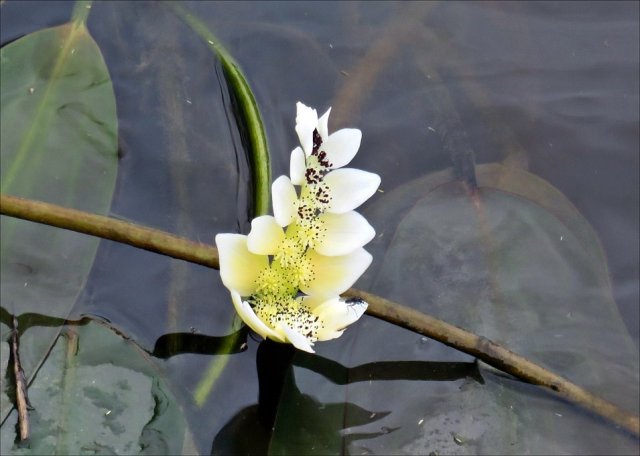Aponogeton distachyos, the waterblommetjie

Author: Ivan Lätti
Photographer: Martin Etsebeth
Aponogeton distachyos, commonly Cape pondweed or in Afrikaans waterblommetjie (little water flower), is a submerged aquatic perennial. It grows from a rhizome embedded in the mud sediment of permanent or seasonal fresh water that stands or moves slowly.
Several Aponogeton species grow in the winter rainfall area of the Western and Eastern Cape, widespread in dam, ditch or vlei. It is widely planted, also commercially, eaten as a vegetable or for making the stew known as waterblommetjiebredie, a local delicacy.
The oblong, mottled leaves float on long stalks of up to 1 m upon the water surface. The fragrant flowers grow in forked spikes above the water surface and leaves. Flowers are small and one-petalled. The petal is white; a creamy yellow hue is visible towards the base of the larger flowers, lower down in the spike in picture.
Every flower has a cluster of more than six stamens, each topped by a tiny, dark brown anther. Pollination is done by bees and other insects. Flowering and harvesting happen in winter and spring (Manning, 2009; www.biodiversityexplorer.org; www.plantzafrica.com).

